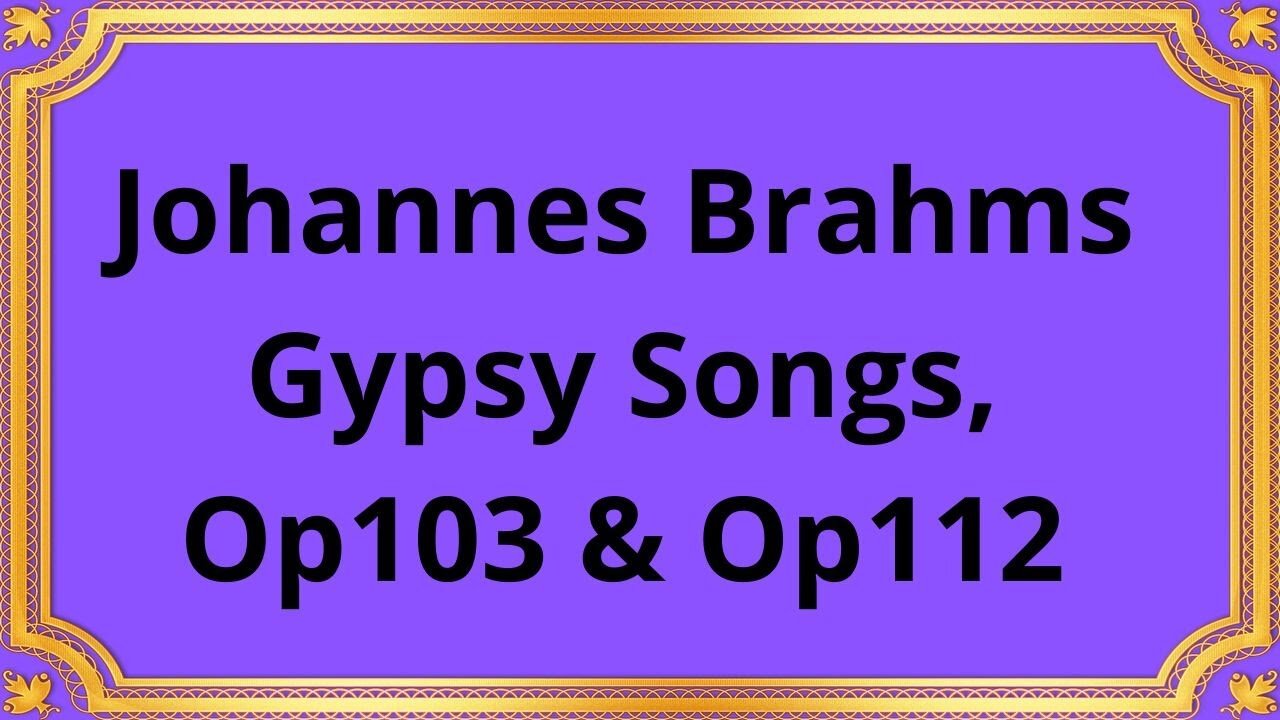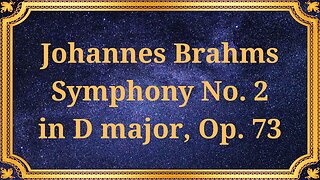Premium Only Content

Johannes Brahms Gypsy Songs, Op103 & Op112
#ClassicalMusic #MusicalComposition #JohannesBrahms #GypsySongs #Op103 #Op112 #VocalMusic #ArtSongs #RomaniCulture #GermanComposer #19thCentury #FolkElements #PianoAccompaniment #EmotionalDepth #ExpressiveMelodies #LyricalPoetry
STEPHANE CAILLAT VOCAL QUARTET:
Gistle Prevet, soprano; Gladys Felix, alto;
Régis Oudot, tenor; Michel Jarry, baritone with Sylvaine Billier, pianist
Johannes Brahms, a prominent German composer of the 19th century, left an indelible mark on the world of classical music with his rich and diverse compositions. Among his noteworthy works are the "Gypsy Songs," Op. 103 and Op. 112.
The "Gypsy Songs" (or "Zigeunerlieder" in German) were composed by Brahms between 1887 and 1888. They draw inspiration from the culture and music of the Romani people, a nomadic ethnic group known for their vibrant traditions and captivating melodies. Brahms' fascination with Romani music led him to incorporate elements of their folk tunes, rhythms, and expressive styles into these compositions.
he "Gypsy Songs" consist of a collection of vocal art songs, set to lyrical poetry primarily written by Hungarian poet Hugo Conrat. The pieces are typically performed by a solo voice accompanied by piano. Op. 103 comprises eight songs, while Op. 112 adds another five, each offering a unique musical and emotional experience.
Brahms masterfully weaves together the essence of Romani music with his distinct compositional style. The songs feature spirited rhythms, passionate melodies, and intricate harmonies. The use of modal scales, ornamentation, and expressive dynamics evokes the essence of Romani musical traditions while showcasing Brahms' mastery of musical composition.
The marriage of Brahms' musical craftsmanship and Conrat's poetic verses allows the "Gypsy Songs" to explore a range of emotions. From tender love songs to melancholic laments, each piece tells a story through its evocative lyrics and musical motifs. Brahms' ability to capture the essence of human emotion within these songs is a testament to his artistic prowess.
The "Gypsy Songs" hold a significant place within Brahms' oeuvre, representing his exploration of diverse musical influences and his ability to infuse them with his signature style. They showcase his commitment to preserving and celebrating the rich musical traditions of various cultures. Moreover, their enduring popularity has ensured their continued performance and appreciation by musicians and audiences alike.
Conclusion:
Johannes Brahms' "Gypsy Songs," Op. 103 and Op. 112, stand as a testament to his musical genius and his ability to blend different cultural elements into his compositions. Through his exploration of Romani music, Brahms created a vibrant tapestry of expressive melodies and emotional depth. These pieces continue to captivate listeners, offering a glimpse into the rich musical heritage of the Romani people and the timeless beauty of Brahms' artistry.
You have the opportunity to support the channel:
https://destream.net/live/RadSiarAl/donate
https://www.buymeacoffee.com/6355radsiaral
-
 36:10
36:10
Classical music_Music Inspiration
1 month agoJohannes Brahms Symphony No. 2 in D major, Op. 73
551 -
 12:59
12:59
Actual Justice Warrior
16 hours agoDemocrat Calls For Gangs To ATTACK ICE
6.85K16 -
 34:18
34:18
Athlete & Artist Show
4 days ago $1.57 earnedPanthers Win BACK 2 BACK, Bennett Wins Conn Smythe, Can Florida Keep The Rat Pack?
12K1 -
 23:08
23:08
DeVory Darkins
1 day ago $5.90 earnedCNN suffers HUMILIATING SETBACK after Iran confirms damage to nuclear sites
15.5K81 -
 8:09
8:09
Nate The Lawyer
1 day ago $1.70 earnedKarmelo Anthony Indicted for First‑Degree Murder Facing Life In Prison
13.3K9 -
 1:06:58
1:06:58
The Chris Cuomo Project
1 day agoAOC Is KILLING the Democratic Party Over Iran
11.3K10 -
 1:17:05
1:17:05
"What Is Money?" Show
1 day agoGary's Economics Explains Money (Badly)
16.5K6 -
 4:08
4:08
Sugar Spun Run
23 hours ago $2.13 earnedChicken Salad
16.9K7 -
 9:00
9:00
The Art of Improvement
19 hours ago $3.17 earnedHow to Break Through Your Fear of Failure
19.2K4 -
 7:18
7:18
DropItLikeItsScott
1 day ago $1.59 earnedWait, What...I Like GLOCK Now??
12.4K2